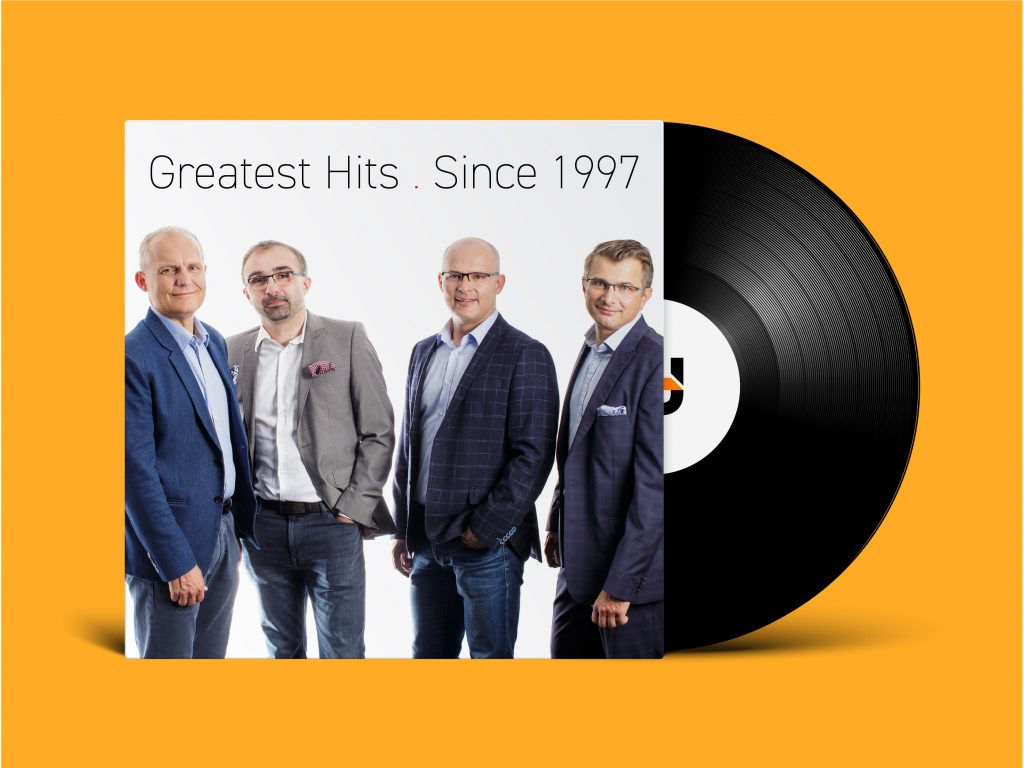25 Years / Understanding Today’s Tech Language
Back in 1997, many of today’s concepts didn’t even exist. We were on the verge of becoming netizens and webheads with our palmtops by our sides. Technology wasn’t “smart”, nothing was “optimized” and a tablet was made of stone.
The technology world is no stranger to buzzwords. We ourselves talk about multiexperience, single sources of truth and mobile-first concepts. And just try explaining to your grandparents that “React Native” is a framework, based on a library, built on a language. You’re just speaking with a very different dictionary.

We can’t always guarantee these concepts will exist in 25 year’s time – some will simply become the standardized norm, while others may be stepping stones on the path to something even better. But a little translation never hurt anyone, right? 😉
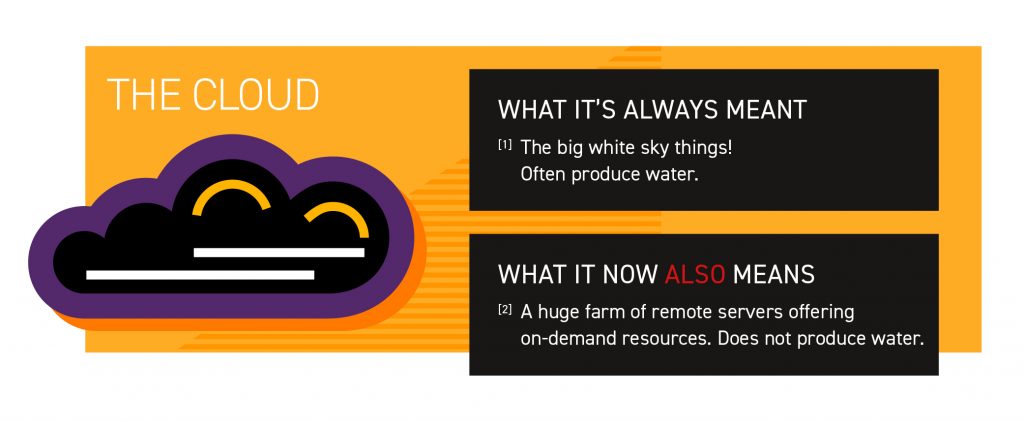
The Cloud is the most recent, but arguably most persistent, term for off-site server space. We’ve had remote servers, hosting platforms and even – boy are we going back a bit here – “computer timesharing”.
Will it stick around? For the foreseeable future, the Cloud will remain the Cloud, but there’s one alternative on the horizon: quantum computing. If/when this becomes standard, will we refer to it as “cloud quantum computing”? We all know that’s a mouthful.
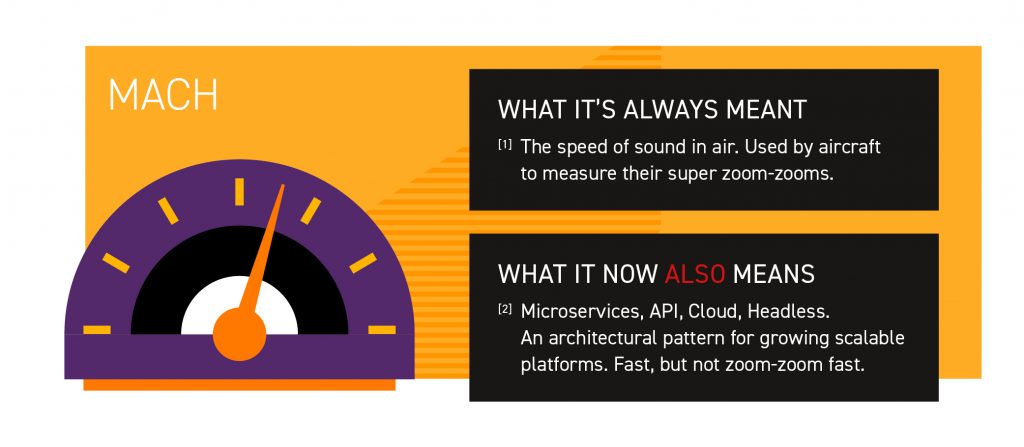
Even just a few years ago, “Mach” was used in two places – to gauge the speed of aircraft and to sell men’s razorblades.
In IT, MACH is an acronym of Microservices, API, Cloud and Headless. Aside from the fact that API is an acronym-in-an-acronym, “cloud” and “headless” are also inclusions on this list so… yeah, good luck explaining this at a party if you’re a “MACH Architect”.
Will it stick around? MACH architecture as a concept isn’t going anywhere anytime soon. It’s fast, flexible and easily adjustable – it’s the “standard” that IT wants to be. However, we’re also seeing a plethora of buzzwords here – MACH, Headless, Composable, Jamstack – that are only adding to the confusion. Do we need all of them?
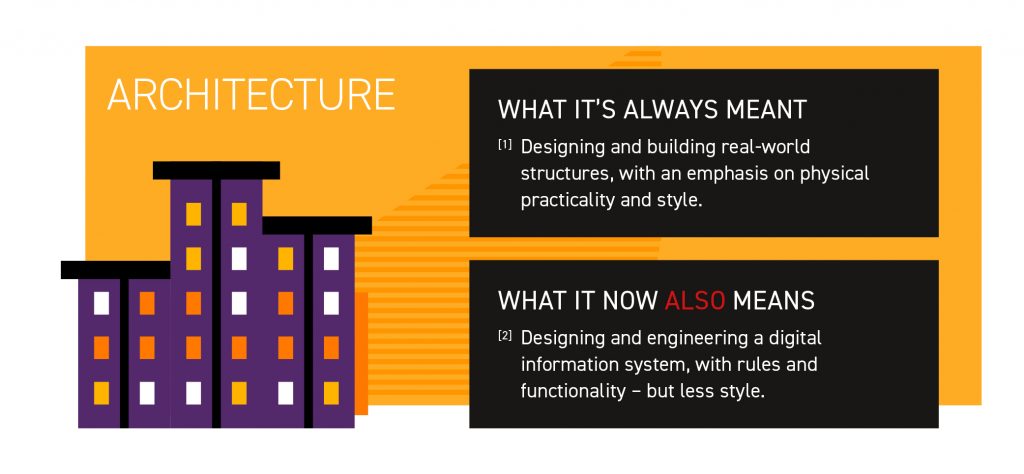
Architecture is a term that traces its origin from Latin, so it’s clear its meaning has been expanded along the way. Today, we can use it to represent the equivalent processes in IT. We already talk about platforms and foundations – terms also taken from architectural construction.
Will it stick around? However, the term itself also signifies a shift in how technology is viewed. Architecture implies the need for foundations, foreplanning and a general strategy. It’s an essential concept for backend building. Architecture is a set of principles and, while new tech stacks like MACH will come (and possibly go), the underlying guidelines remain.
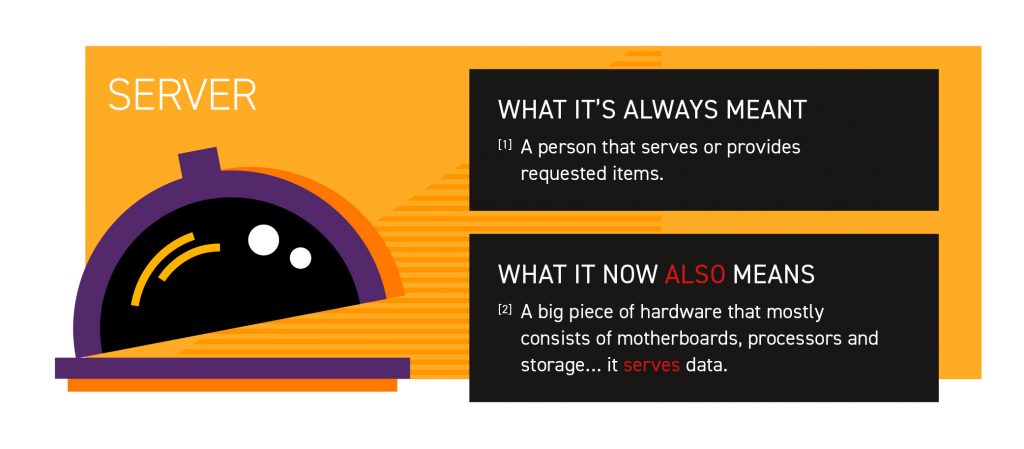
Server is a term that makes sense, in a way. It serves up what was requested. However, the main difference with the older server (i.e, a fancy waiter or waitress) is that there’s a sense of luxury and indulgence. A stack of hard drives and processes lacks the politeness or sense of courtesy.
And if we’re talking about servers, we also need to talk about severless. The root word doesn’t technically exist in the traditional concept, but it implies the absence of a server or waiting staff. Serverless in IT, however, arguably means the abundance of servers – or more specifically, the ability to use cloud computing processes as much or as little as needed, regardless of the boundaries of this or that server.
Will it stick around? At the end of the day, every digital solution needs to hosted on and served from somewhere. Maybe there will be a time when everything is in the cloud and no personal servers exist (so Serverless would make even less sense) but that’s still a long way down the road.
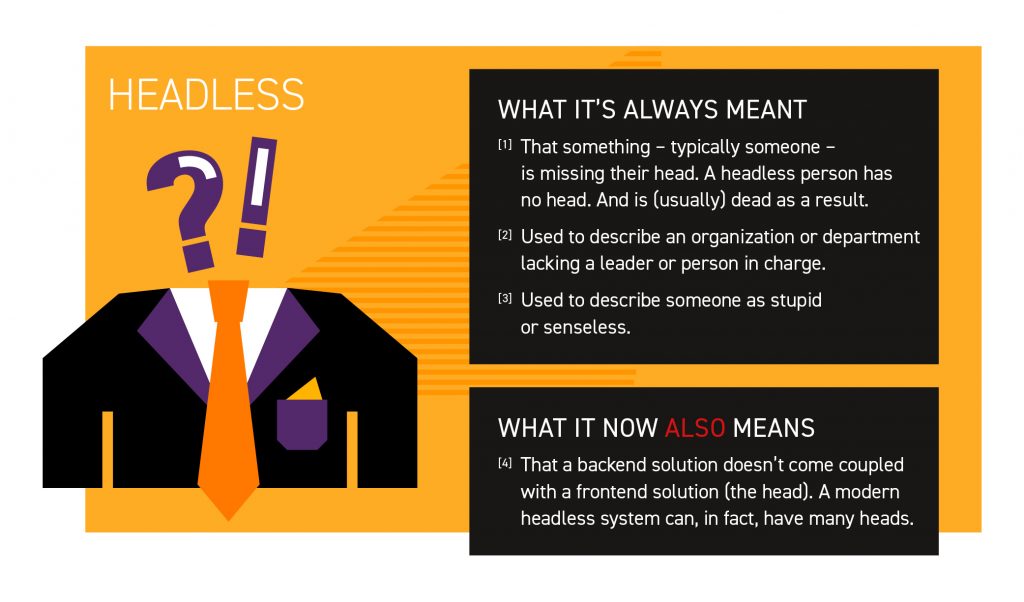
Between headless and serverless, we’re pretty sure the IT world doesn’t understand the “less” suffix of the English language. And, less we not fully explain ourselves, headless is the perfect example.
If a “head” here refers to the frontend on top of the backend “body”, headless implies there’s no frontend at all (which makes such services unusable for humans!). However, it simply means there’s no prefixed head (so the…. neck? Stretching the analogy a little here) so businesses are free to add the head (or heads) that they want.
Will it stick around? Should it be headmore? Headfree? Headache? To be honest, those all sound horrible. There’s a good chance that headless will get absorbed into the wider “composable” terminology on the wider conceptual level. At the specific technology level, we still expect to see the likes of Headless CMS for quite some time. But there’s already talk of hybrid CMS, so don’t quote us on that 😉
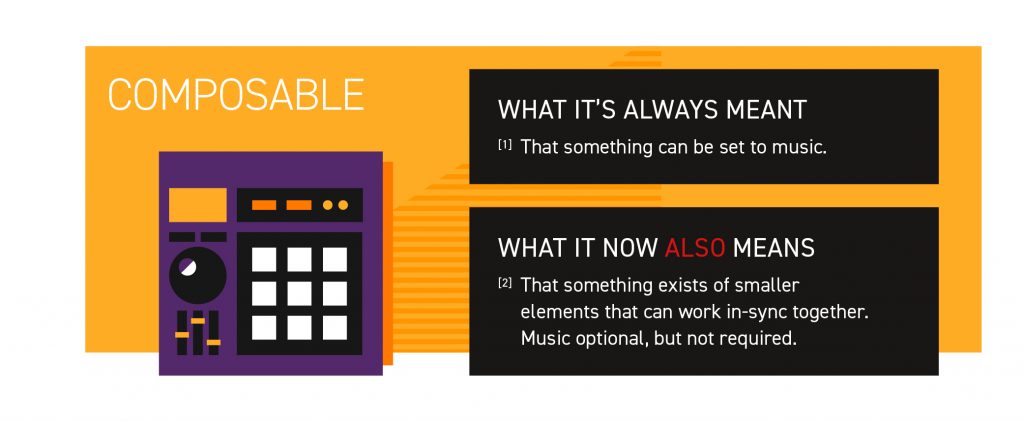
The word composable can be used in relation to architecture, but it’s most commonly heard when talking about “composable commerce”. It’s also a very new term, as it uses some modern technologies to enable better flexibility.
It’s also, however, very similar to other mentions on this list (and more not included). Composable commerce focuses on architecture that uses the best available solutions for each business use or process. These are then connected together. You’ll hear key words here like API, Microservices, Cloud… and if you’re thinking this sounds like MACH again, welcome to the confusion 😊 It’s also regularly interchanged with headless commerce since, once you start separating things, you usually end up splitting the front and back as well.
Will it stick around? Well, we’ve got more than a few terms for very similar concepts. Since composable commerce is very poetic, but hard to define, we’re not so sure here.
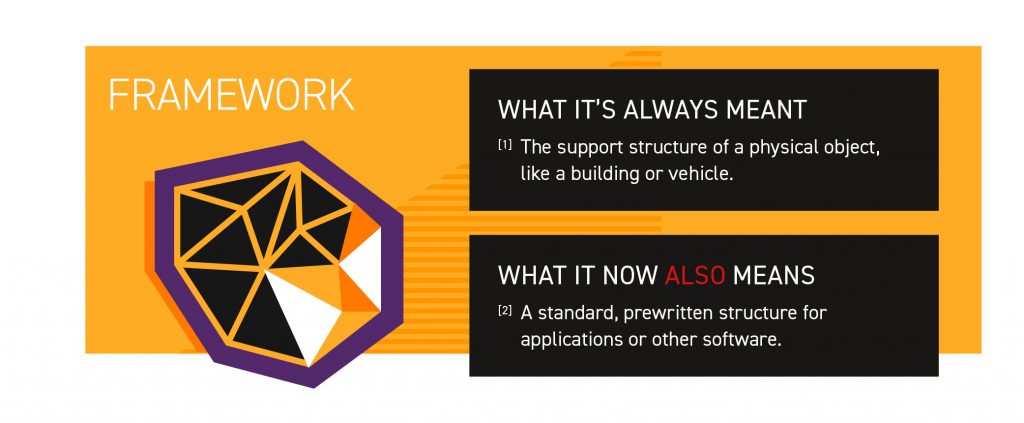
Alongside architecture, frameworks are another element that technology has borrowed from construction. Frameworks are useful – they enable companies to hit the ground running. By getting the basic skeleton established, teams can focus on building the more unique elements rather than manually reinventing the wheel.
There are many areas that are the same in any business, so frameworks allow developers to avoid repeating themselves and instead hit the ground running on the more unique parts of a project.
Will it stick around? Just like architecture, frameworks represent a more organized, work-efficient approach to building solutions. We see mobile frameworks to make apps, e-commerce frameworks for e-commerce (obviously), to name just two. In the future, we’ll see MACH frameworks and more… but they’re still frameworks 😉
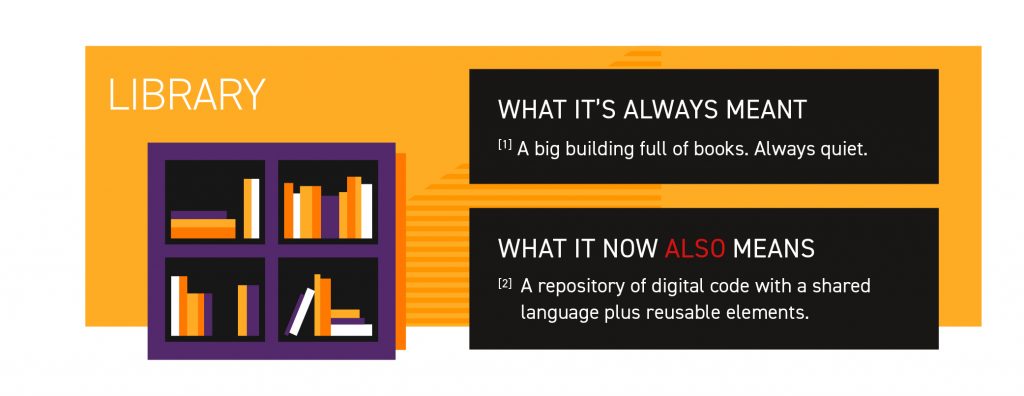
Libraries are practically a staple of software development. They contain useful snippets of code that are needed over and over – the various interactions and scripts that are necessary to make various things work.
You can also consider the likes of Design Systems as libraries – they contain the digital code that can be used in many places.
Will it stick around? With the move towards composable systems and reusable components, the need for libraries of pre-existing assets will only increase. They’re the counterpart to frameworks – in fact, more examples of the latter (React Native) are built from libraries (React JS).
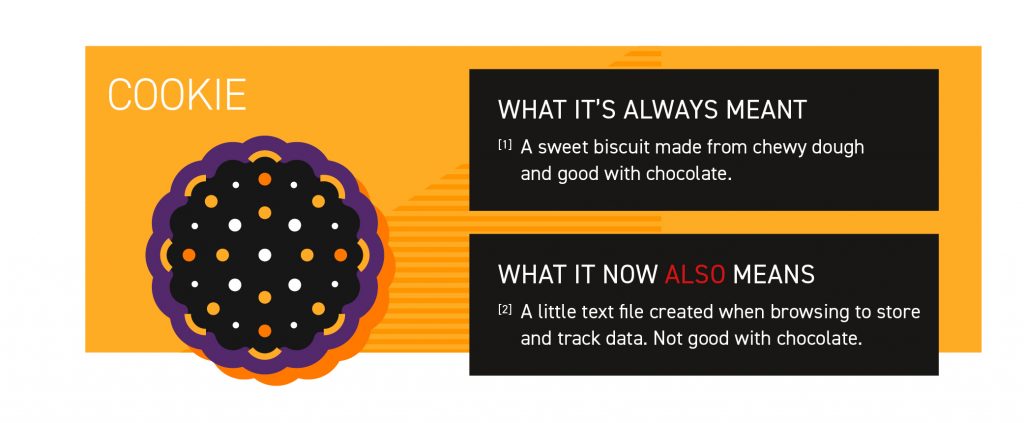
“Delete cookies” is a term we all know every well. When the internet was in its early days, cookies were essential for tracking user data and learning how to make our websites better. Now, they’re mostly associated with advertising, data collecting and slowing our browsers down when we forget to clear them after a few years…
And if you’re wondering where the terminology comes from, it comes from the “magic cookie” data packets used in Unix. And that came from… eh, it’s a long story.
Will it stick around? The last couple of years have not been kind to the cookie. GDPR and other initiatives have made the cookie less reliable. The browser-based solution is especially challenged by the server-side pixel.
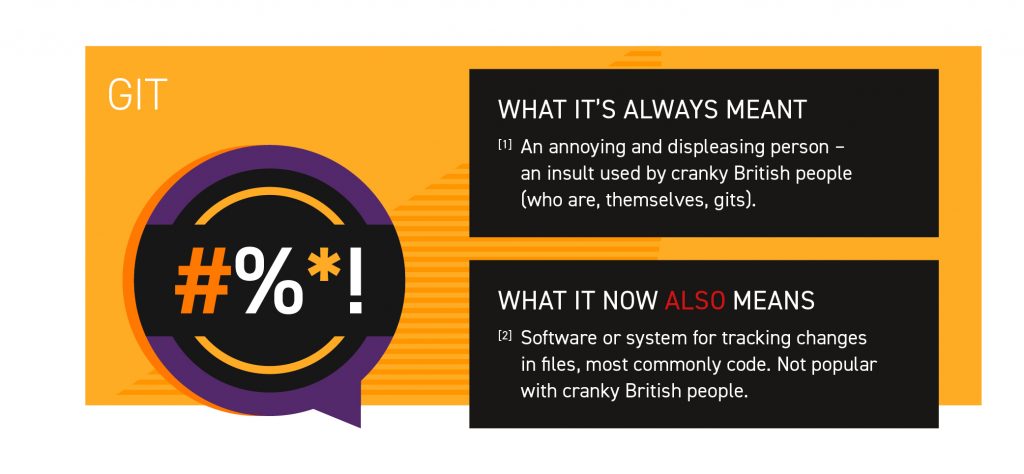
And let’s end with one of the more funny terms. For the longest time, “git” has predominantly been an insulting. You can be a grumpy git, you can be a cheeky git, and you can even be an old git. So why do we refer to gits – software for tracking changes in development – as gits?
Blame the creator, Linux Torvalds of “Linux” fame. Like the open-source system, Torvalds chose the name the system after himself.
Will it stick around? Well, we still need a way to develop our software, and there’s no better solution on the horizon. Of course, unless you’re a developer involved in a project, this isn’t a word you’re going to hear all that often. But we work in such a company, so we hear it a lot 😉
Now You Can Speak The Lingo!
This is not a complete digital dictionary by far. New terms are being created all the time – and we didn’t want to include those most likely to be a passing fad or simply not important enough for us to bring up here.
However, we do hope we’ve highlighted some of the most common terms being spoken today, explored what they mean and what their long term impact on the industry might – or might not – be.
So, the next time your IT guys recommends implanting a serverless framework on your headless, composable, cloud-based solution, you’ll know what they mean. And then tell them to speak human 😉
